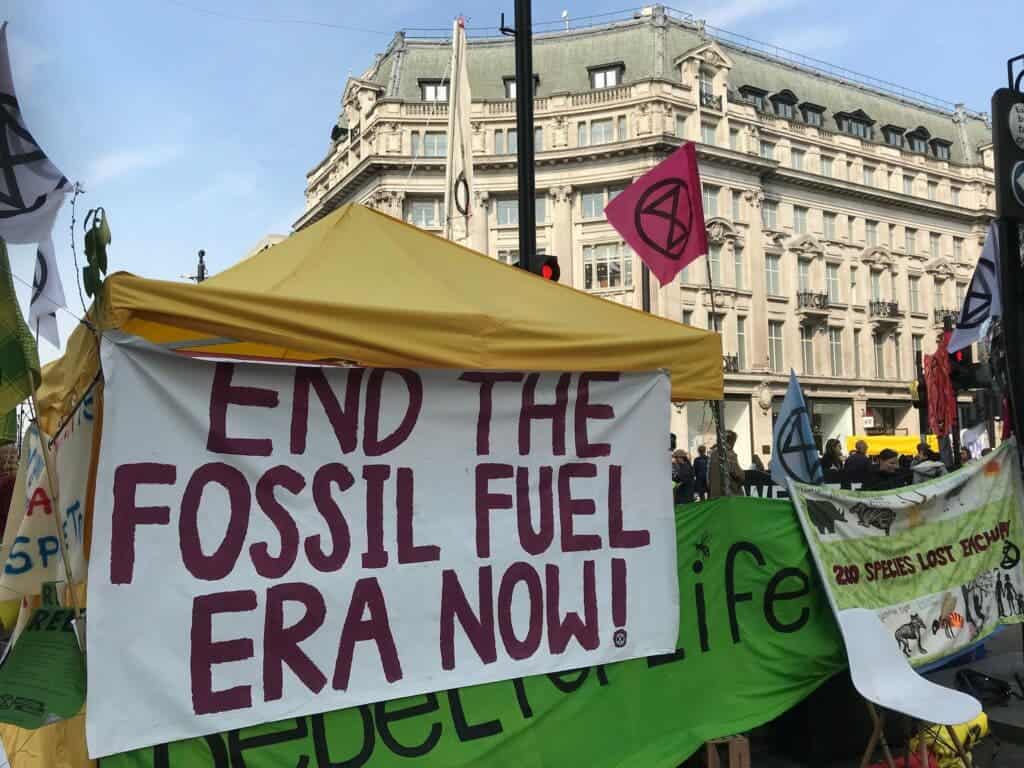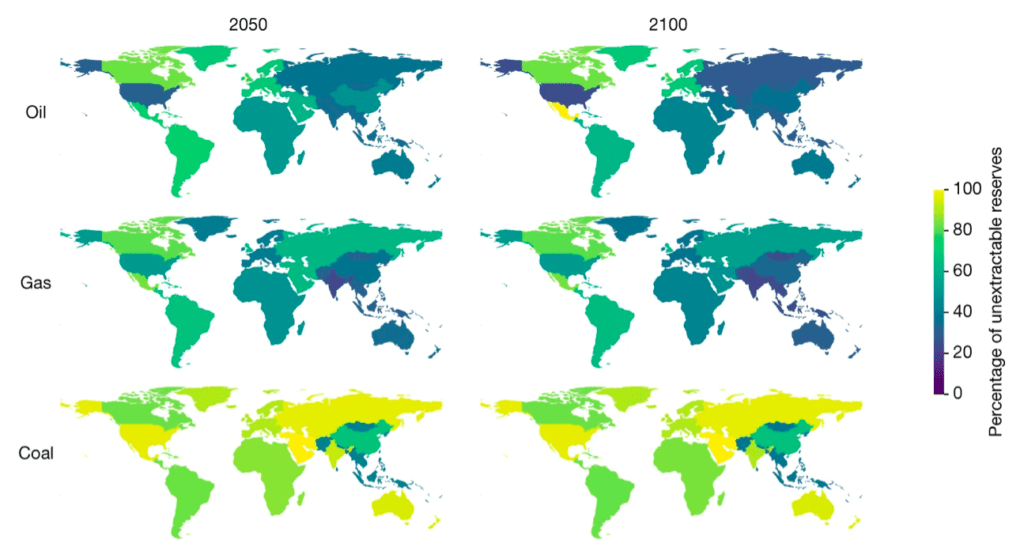After decades of growth, the rate of production and use of fossil fuels will need to reverse and decline very rapidly to meet internationally agreed climate goals, according to a new study.

Researchers found that nearly 60% of proven oil and gas reserves and almost 90% of coal reserves have to remain on the ground in order to limit global warming below 1.5ºC compared to pre-industrial levels – one of the targets included in the 2015 Paris Agreement of climate change signed by almost every country.
This means that production of oil and gas would have to fall by 3% every year globally until 2050, with most regions peaking production now or during the next decade. Still, this scenario, the researchers said, is “very probably” an underestimate of what’s actually required, meaning production “would need to be curtailed even faster.”
The study from University College London (UCL) is the latest report warning over the dangers of unregulated fossil fuel production. The Intergovernmental Panel on Climate Change (IPCC), a group of climate experts, called last month for significant and immediate cuts to greenhouse gas emissions, especially targeting the energy sector.
“We stress that our estimates of unextractable reserves and production decline rates are likely underestimates,” lead author Dan Welsby told Euronews. “However, assuming the political will is present to fulfil the commitments made in Paris, the reductions in fossil fuels suggested in our work are entirely feasible.”
Keep them in the ground
The study builds on one previously published in 2015, which estimated that one-third of oil reserves, almost half of fossil methane gas reserves and over 80% of current coal reserves should remain in the ground in 2050 to limit warming to 2ºC. The increase in the new study is down to a stronger assumed climate ambition and changes in the outlooks for renewables.
The new figures mean, for example, that 62% of the oil in the Middle East would have to remain in the ground. Canada would be the most affected territory in percentage terms, as 83% of its oil reserves would have to stay untouched. Canada is also the most affected when it comes to natural gas, with 81% of its reserves being out of limits.

Fossil fuels are still the main driver of the global energy system, accounting for 81% of primary energy demand. Still, there are some promising signs, the researchers argue. Global coal production peaked in 2013 and oil output is estimated to have peaked in 2019 or to be nearing peak demand. This means that at least some fossil fuel reserves will probably never be extracted for economic reasons.
“This has important implications for producers who may be banking on monetizing those reserves in the future, and current and prospective investors,” the researchers wrote. “There continues to be a disconnect between the production outlook of different countries and corporate entities and the necessary pathway to limit average temperature increases.”
Governments who have historically benefited from fossil fuels such as the US should take the lead in developing an energy transition to non-conventional renewable energy sources, the researchers said. Other countries that have a high dependency on fossil fuels but a low capacity for a transition have to be supported to follow suit and further exploit renewables.
There are really no excuses, especially as the costs of renewables are going down fast. The International Renewable Energy Agency (IRENA) found that two-thirds of wind and solar plants that were installed last year will generate cheaper electricity than fossil fuel options. Renewables will become the backbone of the electricity system, IRENA said in the report.
The study was published in the journal Nature.



